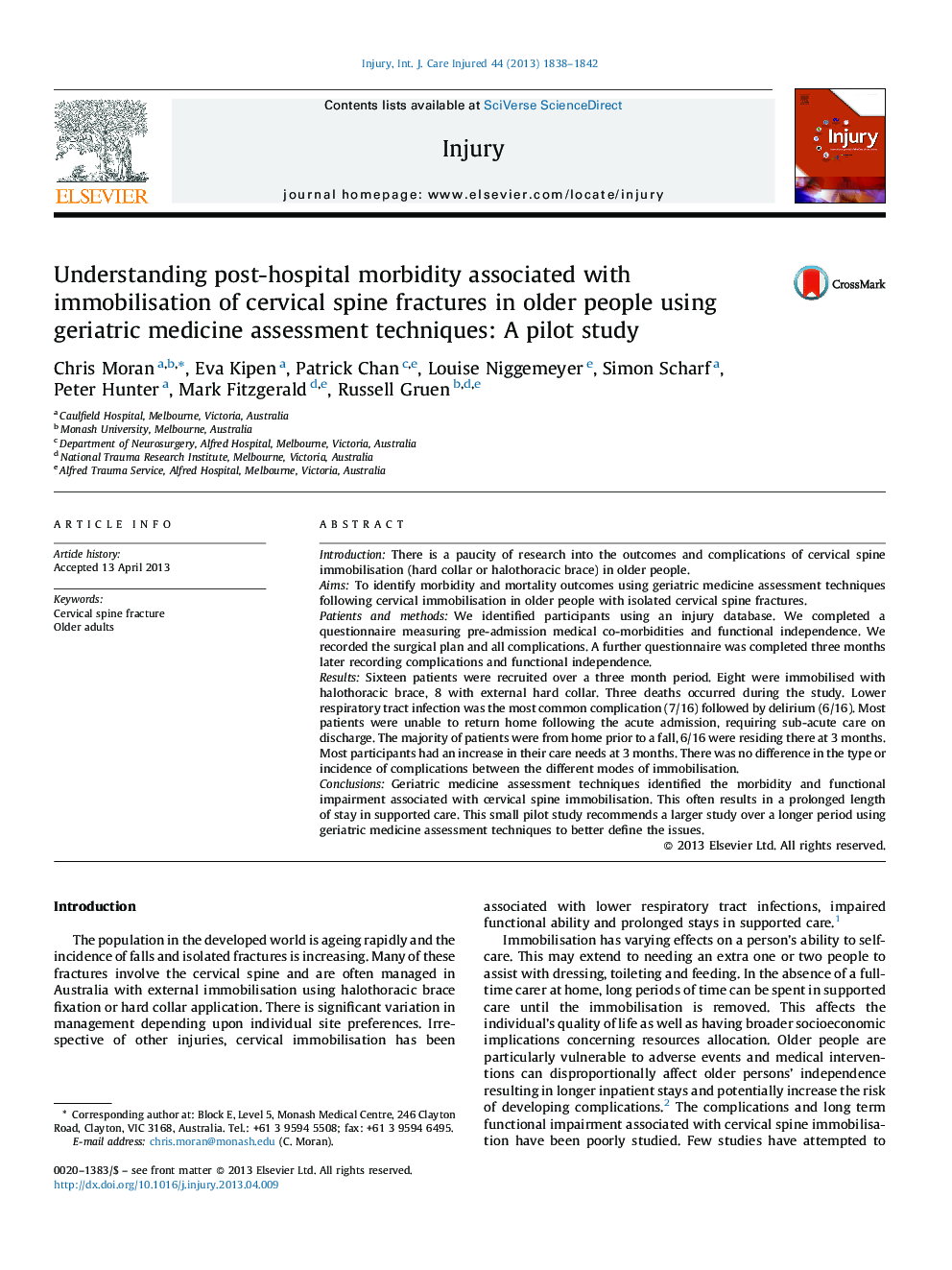| Article ID | Journal | Published Year | Pages | File Type |
|---|---|---|---|---|
| 3240066 | Injury | 2013 | 5 Pages |
IntroductionThere is a paucity of research into the outcomes and complications of cervical spine immobilisation (hard collar or halothoracic brace) in older people.AimsTo identify morbidity and mortality outcomes using geriatric medicine assessment techniques following cervical immobilisation in older people with isolated cervical spine fractures.Patients and methodsWe identified participants using an injury database. We completed a questionnaire measuring pre-admission medical co-morbidities and functional independence. We recorded the surgical plan and all complications. A further questionnaire was completed three months later recording complications and functional independence.ResultsSixteen patients were recruited over a three month period. Eight were immobilised with halothoracic brace, 8 with external hard collar. Three deaths occurred during the study. Lower respiratory tract infection was the most common complication (7/16) followed by delirium (6/16). Most patients were unable to return home following the acute admission, requiring sub-acute care on discharge. The majority of patients were from home prior to a fall, 6/16 were residing there at 3 months. Most participants had an increase in their care needs at 3 months. There was no difference in the type or incidence of complications between the different modes of immobilisation.ConclusionsGeriatric medicine assessment techniques identified the morbidity and functional impairment associated with cervical spine immobilisation. This often results in a prolonged length of stay in supported care. This small pilot study recommends a larger study over a longer period using geriatric medicine assessment techniques to better define the issues.
